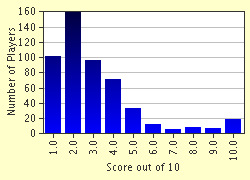Quiz Answer Key and Fun Facts
1. What are the two types of pigment capable of being produced by melanocytes (pigment cells)?
2. What locus is primarily responsible for the solid yellow/red or brown/black color of breeds such as the Labrador Retriever?
3. The Agouti locus is responsible for many coat patterns. Which of the following is NOT due to Agouti?
4. Merle, a pattern recognizable by a mottling of darkly and dilutely pigmented patches, must be inherited in what form in order to manifest?
5. The solid black phenotype can be caused by two different loci: Agouti and Extension. Which dog breed is black due to Agouti?
6. Dogs can be pale in coat color due to several genes. The most commonly suspected loci are Dilute and Progressive Grey. Which dog is grey/blue due to the Dilute locus?
7. You have two purebred dogs, one black Labrador Retriever and one blue Weimaraner. The Labrador retriever is homozygous for black and the Weimaraner is homozygous for dilute. What color of puppies could you get if you mated the two dogs together?
8. A yellow Labrador Retriever is born from two brown parents. What color will its nose leather be?
9. Some dog breeds are "fixed" at a particular locus. That is to say, they can only have one certain allele at a locus, as the other options are not present in the breed. Which of the following is a true example of a trait fixed in a breed?
10. Dalmatians most commonly have black spots, but other colors appear. Which is the only other color accepted by Kennel Clubs in both the USA and UK?
Source: Author
GioSheltie
This quiz was reviewed by FunTrivia editor
crisw before going online.
Any errors found in FunTrivia content are routinely corrected through our feedback system.

